Adventure
Vision
John Eickert
The dripping humid heat was oppressive and became erotic. My sweat soaked shirt and shorts clung to me as if a second skin. The moist air was thick and difficult to breathe. We walked down an old jeep track, my Manas wildlife
guide and I, hoping to spy something a bit more exciting than deer or vultures. Our sandaled feet created a soft patter on the packed-soil parallel pathway. My guide, “M” as he asked to be called, as he was certain I would be unable to pronounce his name,
assured me there would be gaur ahead. He took other tourists to them just several days ago. He was confident and self-assured. I just hoped to see, something.
A loud dramatic clamor issued from the bush ahead and to the right of our path. The sound, similar to a very, very large human nose cleared with force of heavy moist debris, caused us to freeze in place. I did not even
breathe. Though new to India wildlife viewing, I knew from instinct the sound was a warning and the warning giver was large. We waited. The telling sound came again, this time accompanied by an immense crashing. My heart pounded against my chest, which forced
me to take a deep breath. I looked about for a tree or some other refuge. M did too.
The noise of breaking branches and trampling elephant grass subsided. M looked to me and me to him. We both smiled and then laughed. He mimicked, using a finger to his nose, with the finger rising from the top of the nose
at an angle. I understood. We just missed seeing or being run over by an Indian One Horned Rhinoceros. Two days before, I rode an elephant into some marshland and saw my first rhino from a perch aboard that elephant. I looked down on that rhino. Now I considered
the consequence of meeting one eye to eye. All rhino are notorious for their poor vision, coupled with an instinctive desire for privacy, which can at times make them dangerous. I decided then that morning, the best way to view rhino was from the back of an
elephant, M agreed with me.
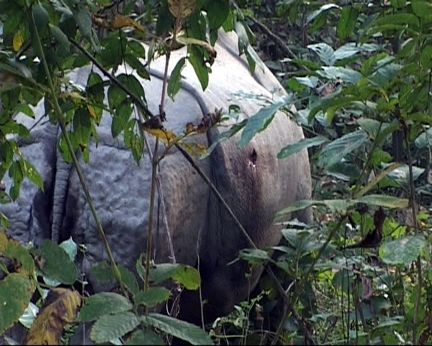
The rhino faces extinction throughout India and Southeast Asia. Poachers slaughter them to sell the horn for profit while humans expand onto rhino habitat hoping for a place to live, a home. The needs of humanity fall heavy
on the Indian One Horned Rhino. As mankind goes crashing into our own future, can we use sightlessness as an excuse? I encourage all to find time, this year, and try to spot a rhino in the wild, take your children. The opportunities to trek and raft come and
go, but wildlife viewing in the modern world has taken a new sense of urgency. India contains numerous locations to observe rhino in their natural setting. Take the time and go there this year. As always, when you take the time, take your time. Cheers.
(Photograph of injured rhino in Chitwan National Park, Nepal by
Susan Sharma)
|
Amazing Facts About Wildlife
Statistics exposes whale poaching-
Higher math and whale poaching
That DNA marks every cell in the body makes it versatile tool for the detective, says S.Ananthanarayanan.
Oregon State University scientists used this feature of DNA to crack a difficult problem of how many whales fishermen in the Sea of Japan were snaring.
Endangered species
The Minke whale or the Lesser Lorqual is a small Baleen whale, the family that includes the Humpback whale, the Fin whale and the Blue whale. It
measures about 2.5 metres at birth and 8 to 10 metres when grown. It is dark grey above and has a white belly, with grooved throat and a white patch on the flipper. The Minke is common in the North Atlantic and
Pacific. Although all commercial whaling is forbidden by the International Whale Commission, the Minke is still at risk.

In South Korea, whale meat can be sold if the animals had been caught by accident in fishing nets, a ‘bycatch’, like a ‘byproduct’. But each such death
of a whale needs to be reported to the Government. Between 1999 and 2003, fishermen reported snaring 458 Minke whales. But a question was whether the whole catch was reported. The New Scientist reported last week that Scott Baker and others of Oregon State
University in Newport have found that the true catch was nearly twice that number and threatens the survival of whales in the Sea of Japan.
Counting fish
So how does one find out how many fish there are in a pond? Without catching all the fish, that is. Well, a method is to first catch a fair sample, say
100 live fish and mark them in some way. One method used is to bathe the fish in a liquid called calcein. Calcein binds with calcium, which is there in the scales of fish, and fluoresces. The stain does not wash off for 10 to 12 days. The compound has been
used in quantifying calcium content of stone, for tracing blood flows within the eye and for examining bone growth in animals. When fish are put in a salt bath followed by calcein immersion, they develop a stain that is detectable without having to sacrifice
the fish.
So a 100 fish are marked with calcien and thrown back into the pond. After the fish mingle for a week, another sample of a 100 fish is snared. And we
check how many of them have a calcein stain. If half the fish have the stain, it shows that there are 200 fish in the pond. If only a tenth of the fish are stained, then there are a 1000 fish, and so on.
Minke in the market
But how does this help trace and count whales that have been illegally killed? The scientists collect whale meat from the market and use DNA fingerprinting
to determine how many whales the meat came from. This data alone, which was only a sample, cannot trace all the whales killed. So they went on to the ‘mark and recapture’ method, which ecologists use to estimate different animal populations. With the population
estimated, successive surveys of the appearance of marked whales in the market could reveal the number of whales that had been killed.
The method works because the estimated rate of marked specimens appearing in a sample is more regular if the size of the sample is larger. On the average,
if there are 10 marked specimens in a population of 100, we should find one marked item in every 10 we collect. But this need not happen every time, as we may find groups of 10 with no marked item or sometimes with more than one item. But if we took a sample
of 20, then, again, it is not necessary that we would find exactly 2 items.
But the behaviour is more regular in a sample of 20 than in a sample of 10, with a closer approach of the mean to the real average.


In this way, by looking at the how wide or narrow the variation was in the rate of identified whale DNA turning up in the market, the scientists were able to find how large the sample must have been, which is the correct
number of whales being killed!
[The writer can be contacted at simplescience@gmail.com]
|
Common Birds of India
River Tern. (Sterna aurantia)
-RagooRao
This month I introduce the River Tern to our readers. I was in Ranganthittu bird sanctuary a fortnight back and I could get some good pictures of a lot of migratory
birds which come there for nesting. Ranganthittu is a very beautiful and well preserved bird sanctuary nestled deep in the islands of Kaveri river. I have uploaded a trip report to this sanctuary on the “ Bird Sanctuaries” page, at the link
http://www.indianwildlifeclub.com/UserContent/Trip-Report-Details.aspx?rid=536
Now, back to our bird of the month.
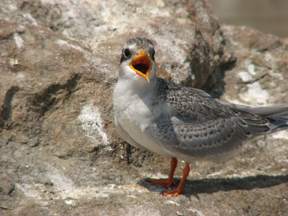 A slender, graceful white bird about the size of a pigeon, with grey upperparts and a black cap on the head, with yellow beak flying gracefully on rivers is the
River Tern. The tail is long and deeply forked and both sexes look alike. The birds take a deep glossy black head and nape in the summer months, being the breeding season. A slender, graceful white bird about the size of a pigeon, with grey upperparts and a black cap on the head, with yellow beak flying gracefully on rivers is the
River Tern. The tail is long and deeply forked and both sexes look alike. The birds take a deep glossy black head and nape in the summer months, being the breeding season.
These birds are very graceful fliers and they frequently land on rocks in the river with a fish firmly held in their beaks. The legs are short, yellow colored and stubby.
The juveniles will not have their black markings but have grey and speckled upper parts.
Distribution is throughout the country and another inland Tern of Indian waters is black bellied and the Gullbilled tern is found occurs on the sea coasts.
It is really a sight to watch these birds fly just above the river waters with graceful flapping of their wings scanning the waters for fish. When they find one they
dive into the water with closed wings and scoop up the fish firmly held in their bills. This is when they alight on a rock in the river and gulp the fish. Soon the ritual is resumed once again. Fish being their mainstay they also relish crustaceans, tadpoles
and water beetles.
The breeding season is in the summer months sometime during March to May. They only scout for a nesting site, sometimes in colonies of terns but do not build any kind
of a neat. 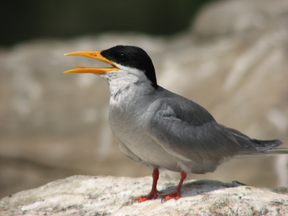
2-3 greenish grey eggs blotched and streaked with brown and sometimes purple streaks are also found, which are laid on plain ground among rocks and sand banks in the
rivers. Whether both the sexes share all domestic chores is to be confirmed, as observing this behavior is a little tricky with both the sexes looking alike and there being a colony of birds.
A very graceful bird and a marvelous sight to see while skimming across the waters is very silent during flight. Right now there is no threat to their survival but as
we keep polluting the rivers, which affects the aquatic life, there could be chain reaction and their survival may be threatened.
(Text and Photographs RagooRao)
|
Eco-travel
A Haven for Birds
-RagooRao
The River Kaveri, which takes it’s birth high up in the Western Ghats, flows down Karnataka state feeding the parched lands and turning them into bountiful yielders of precious
food and then meanders through the valleys of Tamil Nadu blessing them with her bountiful precious water for their land, finally merging with the Bay of Bengal.
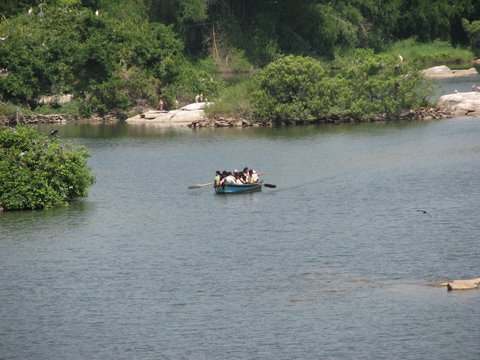
As the river flows through Karnataka over undulating terrain, plenty of small cataracts and some very impressive waterfalls are formed. This river is reverently called the
Life-Line of Karnataka. As the river meanders through the terrain plenty of small islands are formed all the way along it’s course. These islands are a host to plenty of Flora and Fauna all evolving with nature and thriving. One such spot in the river’s course,
close to Mysore-about 12 kilometers, is the Naturally formed group of islands filled with Pandanus plants, Pongamia trees, Mahua trees and a score of other plants playing host to many breeding birds. The banks of the river are filled with Bamboo and other
tall majestic trees. This is The Ranganathittu Bird Sanctuary, where regular nesting birds come to nest and raise their young.
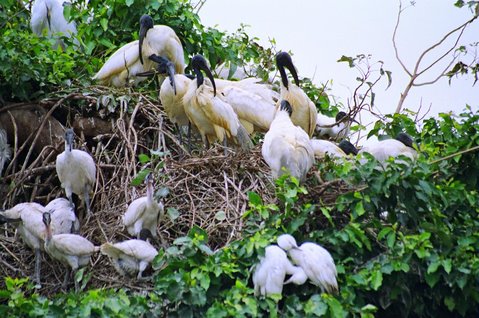
The river being filled with a lot of boulders also plays host to the Marsh Crocodiles and the waters are filled with fish. A pristine home for breeding birds. The
bamboo and other trees also provide a good habitat for most of the birds of Karnataka. The main season for the migratory breeding birds is from Aug to Sept. and
for the other breeding birds it is Dec to March. The islands are a very safe Haven for these nesting birds tucked away inside the deep waters of the river and safe from any land predators. The water being infested with Marsh crocodiles even human interference
and vandalism is kept at bay, thanks to the Marsh crocodiles. In one of the islands even the crocodiles build their nests and breed. One can always find the crocodiles basking on the rocks.
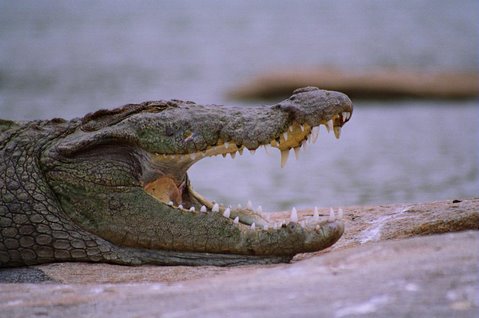
An ideal location for the birds. The river surroundings are all fertile paddy fields, which provide a good source of Crustaceans and other aquatic life as forage for
the parenting birds. The Forest Dept. of Karnataka regulates the visitors to this place and unauthorized entry is prohibited. The serious visitors are taken around these breeding islands by row-boats to have a glimpse of these birds and their young.
Even motor boats are not used to keep noise pollution away.
Visitor facilities are excellent and good view locations are also provided.
There are rest-rooms, a small refreshment canteen a little away from the riverside is also provided. Overnight staying is not possible and also not encouraged by the Forest Dept. In all, Ranganathittu Bird Sanctuary is a Haven for Nature Photographers,
Ornithologists, and a beautiful place to visit.
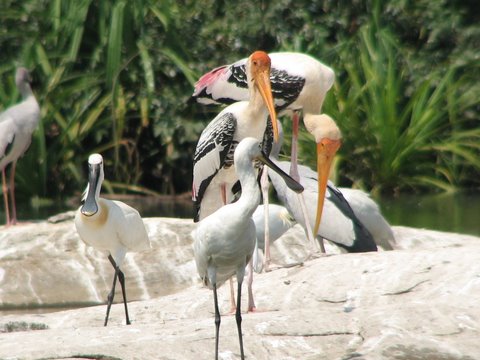
It is really reassuring to see such a Naturally evolved place still maintained in its Pristine condition. Any Nature Lover will enjoy the visit and would always love to
come back often. A List of nesting birds is also displayed with all their details and with appeals to conserve them.
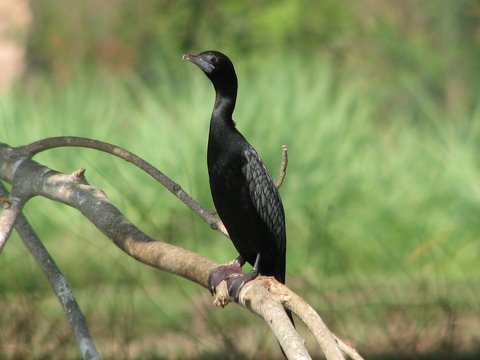
The Regular Birds: Open billed Storks, Painted storks, Spoonbills, White Ibis, Pond Heron, Little Heron, Plumed Heron, Night Heron, Darters, Little Cormorant, River Terns,
Plovers, Red-wattled lapwing, Peacock, Black Ibis, Kingfishers and the River Otters which
are a source of amusement as they dive in and out of sight of the visitors.
|
Eco-travel
Chintpurni, Dharamshala, Pragpur……(Himachal Pradesh)
14-17 th April, 2007
-Partha Pratim Pal
It has been long time since we both (Kirti and myself) took a break from Delhi on religious reasons . As some of you are aware we had been blessed by
a daughter some five months back – we undertook a visit to Chintpurni, Chamunda, Kangra Devi and Jwala ji along with Vanya (our daughter).
Incidentally it was also her second outing after her first being to the Corbett some three months back. Keeping in mind that I won’t find time for birding,
I was little hesitant to carry the birding equipments – But as always heart prevailed over mind!
We reached Chintpurni on 14th evening. Since we had an Aarti appointment in the evening I could not do the Reiki of the surrounding area, though after dinner I
saw few trees.
Next morning I woke up very early more due to people’s voice walking in the street – All eager to do a darshan early morning being Basaikhi weekend .Not expecting any bird life in that cacophony of people ,Radio,
Stereo and of course Mandir mike – I moved out of the Dharamshala with heavy feet and heart with my Binoculars hanging on my neck .
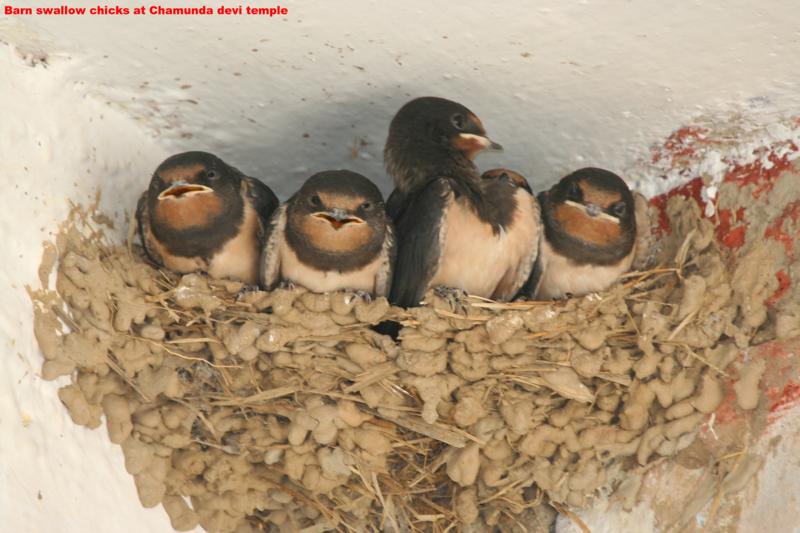
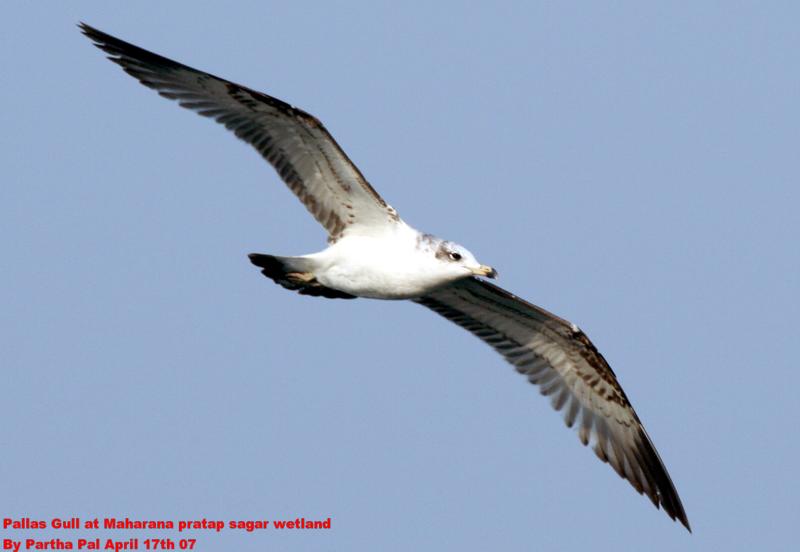
Just 200 mtrs from the Dharamshala, I hit upon a dirt road, which took me to semi jungle kind of a habitat, which lifted my spirit. There was a sudden expectancy in the air . Probably God sensed my mood and in strange
twist of nature – there was flood of Bird activity. I could not believe my luck - nearly 15 pairs of Asian paradise flycatcher with their long white tail fleeting around with few just couple of meters away.
A pair of
Blue rock thrush, Flocks of Plum headed Parakeet and Common Rose finches, Ten odd golden orioles and quite a few more species were sighted within span of hour. More than satisfied since I didn’t expect any – happily I went back to Dharamshala to attend the
morning havan. Only regret being I didn’t listen to Kirti’s advice of carrying the camera for the walk.
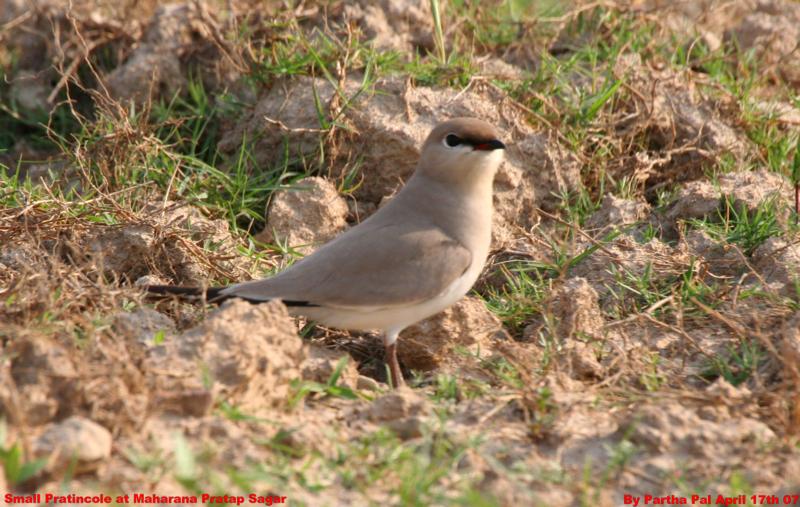
16th afternoon we reached Paragpur our destination for next two days. We stayed in a resort called “Judge’s Court” basically a Pre independence Haveli turned into Welcome heritage resort owned by Mr. Vijay Lal whose
ancestors made the Haveli in 1913. As expected luxury at its best mixed with old royal eloquence,
wonderful food (that includes some great pickles and jams personally made by Mrs. Lal herself – Most of the vegetables and fruits are all grown in the property itself), great hospitality and very very warm hearted host made the stay wonderful.
It has been on our wish list for some time now, finally it materialized.
Interestingly, Paragpur also has a Heritage village for people who are interested in historical facts and architecture.
Lot of its credit goes to Mr.Lal and his family. It is an excellent and well maintained property with lots and lots of trees both fruiting and flowering and of course 120 odd bird species across the year. Paradise flycatcher once
again was the highlight of the little birding I did around the property, not to miss the Grey Hornbill’s fight for nest with the Rose ringed parakeet who ultimately lost all the three juveniles to aggressive Hornbill, omnipresent brown headed, Blue throated
barbet, tiptoeing Grey wagtail, various warblers, various Myna & starlings,
huge flocks of Common Rose finches etc.
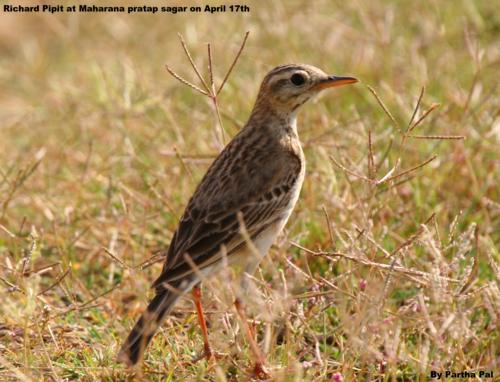
17th was again an out and out
religious day with three of us visiting the balance temples as mentioned above.
Except an odd sighting of Egyptian vulture and Himalayan Griffon at Kangra fort area, no birding.
Down with a severe headache due to excessive heat,
I didn’t have the strength to do any birding that day , though we reached the hotel by 5pm.
18th morning was the D day marked for my morning birding at Maharana Pratap Sagar wetland which is 20 odd kms from the hotel.
Armed with my camera and binoculars ably supported by driver Daler Singh we reached the destination early morning.
Initial scanning of the area was very disappointing though villagers informed us in advance that all migratory ducks have flown back.
I was awe struck by the huge water body. (Sagar is so aptly named) Water riding on the wind when hit the shores reminded me of the seashore.
Initial disappointment gave away to some relief when I saw a Little Ringed plover feeding at the edge of the water.
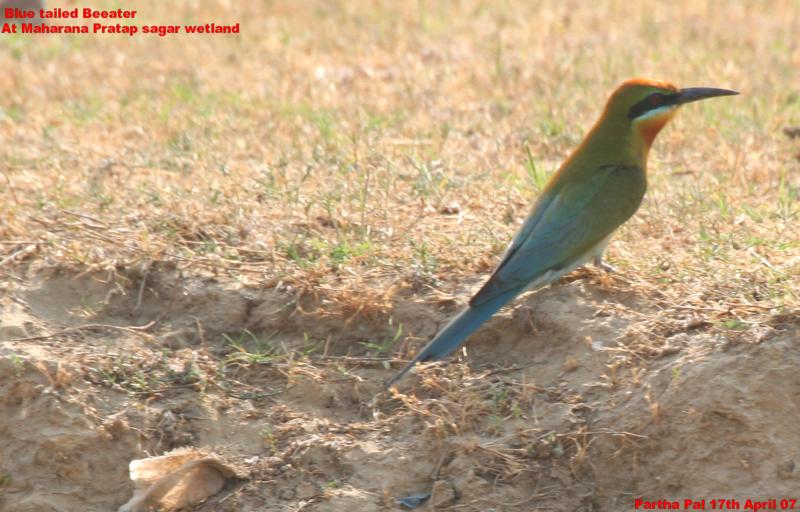
There was no looking back, slowly and gradually one after the other species came tumbling out as if they were hidden in some closet – only favouring the brave who can fight the ever rising temperature which was getting
unbearable with every minute , though cold draft from the Sagar did help me to stay there for nearly two hours . Whether it was different terns, different wagtails, larks, pipits, Blue tailed Beeaters, Bar headed geese,
First winter Palas Gull, Eurasion wigeon, Small pratincole, Different Lapwings and of course my only two lifer of the trip Richard Pipit and Eurasian Skylark (confirmed by Mr. Bill Harvey after seeing the Photographs)- I enjoyed every bit of the two
hour of birding.
Promising myself that I have to be here in winter we drove back to the hotel .On our return journey a solitary Oriental honey buzzard was sighted.
Comparatively to our earlier birding trips I just clocked probably 5 hours of birding, however it turned out to be Ok with nearly Ninety odd species seen including common ones.
God of all seasons, please bring winter fast – I cannot wait to visit the
birding paradise again.
|
Story Of The Month
On Display
--Shivani Thakur
Zoos across the world were established to showcase the wild wealth of the country. People could visit the
zoos and see all the wild animals in close proximity. In our country we have about 163 recognized ones in nearly all the states. The Central Zoo Authority or CZA is the body, which keeps a check on all the zoos existing in the states whether managed by state
or private players. The Marble Palace zoo in Calcutta city established in 1854 is the oldest existing one. The zoos also play a vital part In conserving some of the endangered species.
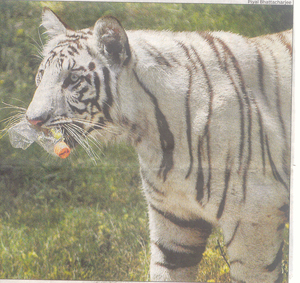 But sadly the state of many zoos is deplorable. A recent death of a guest chimpanzee from Germany in the Delhi zoo due to high temperature brought forth the plight
of animals. The chimp was healthy and had been brought for breeding. But the vast difference in temperature and lack of proper measures resulted in death. The zoos in India are designed in old-fashioned way where it was necessary that visitors see animals.
To do this small-caged enclosures were designed. But these enclosures didn’t have any space for large as well as small animals to have a minimum space for movement. There are no aviaries for birds so as to have a full flight. The animals are usually weak,
unhealthy due to meager supply of food. The dark and dingy enclosures make them susceptible to diseases. The moats are either dry or filled with dirt and garbage. There is no water to drink especially in hot summer months. But sadly the state of many zoos is deplorable. A recent death of a guest chimpanzee from Germany in the Delhi zoo due to high temperature brought forth the plight
of animals. The chimp was healthy and had been brought for breeding. But the vast difference in temperature and lack of proper measures resulted in death. The zoos in India are designed in old-fashioned way where it was necessary that visitors see animals.
To do this small-caged enclosures were designed. But these enclosures didn’t have any space for large as well as small animals to have a minimum space for movement. There are no aviaries for birds so as to have a full flight. The animals are usually weak,
unhealthy due to meager supply of food. The dark and dingy enclosures make them susceptible to diseases. The moats are either dry or filled with dirt and garbage. There is no water to drink especially in hot summer months.
Even if they survive al this, the visitors are the worst. They find their helplessness amusing. To draw attention towards them they throw plastic bags,
eatables and stones. There is little or no respect towards these confined beasts. All these acts along with suffering at the hands of their caretakers are physically and psycologically damaging. This is the main cause for failure of zoos in conserving the
species.
But the zoo authorities are waking up perhaps due to media reports and NGO’s who keep a watch on them. They are now trying to enhance green
cover for extra cooling. The old design by German architect Karl Hegienbeck needs major modification. There should be cross ventilation for one. The San Diego Zoo in the US is famous for providing the most natural setting for animals and birds. The breeding
programme too is commendable. The caretakers too need to be dedicated to their jobs. In Germany when a polar bear was abandoned by its mother, it was hand raised by the zookeeper. Although there were protests by many animal activists who wanted it to be out
down than raised by humans. Death threats were issued to the cub. But the zoo authorities heightened the security to save it. Now the cub is doing well and has the world going “knuts” over him (“Knuts” is the name given to it). 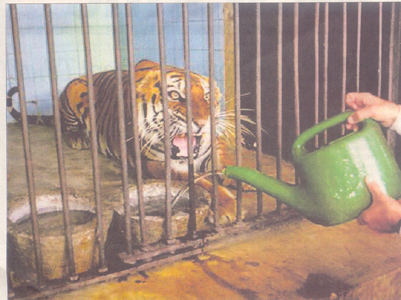
Corporate sponsorship like the one for Berlin Zoo, which is operated by a company can pump in much needed funds for restructuring and maintenance.
More staff and good working conditions for the caretakers. An independent body or an NGO can keep a check. But more importantly empathy by the visitors who should realize that they share this earth and not own it.
Read fascinating animal tales from a retired zoo-keeper from India by clicking here
http://www.indianwildlifeclub.com/Zoo/Index.aspx
( Photograph of tiger with a bottle thrown by visitors into its enclosure in the Delhi Zoo. This telling photo by Piyal Bhattacharjee appeared in the Times of India dated 22
April, 2007.
Photograph of staffer refilling water containers at Delhi Zoo appeared in the Indian Express dated April, 2007)
|